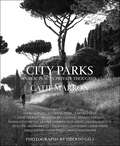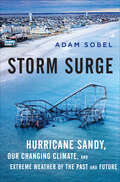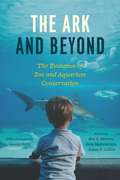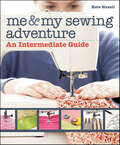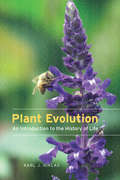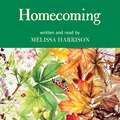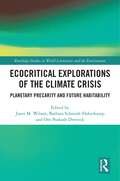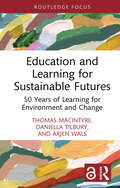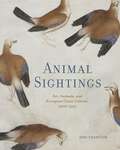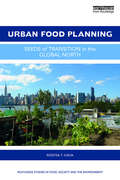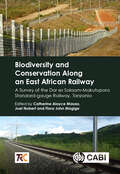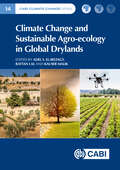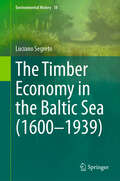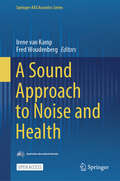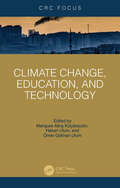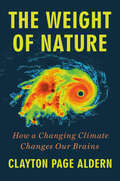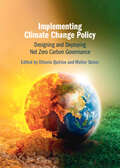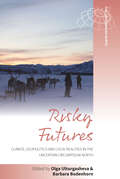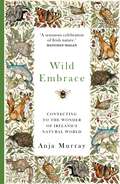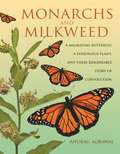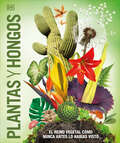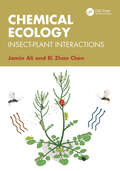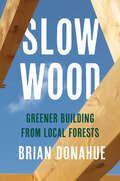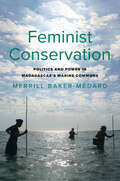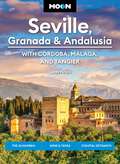- Table View
- List View
City Parks: Public Spaces, Private Thoughts
by Catie MarronCatie Marron’s City Parks captures the spirit and beauty of eighteen of the world’s most-loved city parks. Zadie Smith, Ian Frazier, Candice Bergen, Colm Tóibín, Nicole Krauss, Jan Morris, and a dozen other remarkable contributors reflect on a particular park that holds special meaning for them.Andrew Sean Greer eloquently paints a portrait of first love in the Presidio; André Aciman muses on time’s fleeting nature and the changing face of New York viewed from the High Line; Pico Iyer explores hidden places and privacy in Kyoto; Jonathan Alter takes readers from the 1968 race riots to Obama’s 2008 victory speech in Chicago’s Grant Park; Simon Winchester invites us along on his adventures in the Maidan; and Bill Clinton writes of his affection for Dumbarton Oaks.Oberto Gili’s color and black-and-white photographs unify the writers’ unique and personal voices. Taken around the world over the course of a year, in every season, his pictures capture the inherent mood of each place. Fusing images and text, City Parks is an extraordinary and unique project: through personal reflection and intimate detail it taps into collective memory and our sense of time’s passage.
Storm Surge: Hurricane Sandy, Our Changing Climate, and Extreme Weather of the Past and Future
by Adam SobelWas Sandy a freak of nature, or the new normal?On October 29, 2012, Hurricane Sandy reached the shores of the northeastern United States to become one of the most destructive storms in history. But was Sandy a freak event, or should we have been better prepared for it? Was it a harbinger of things to come as the climate warms? In this fascinating and accessible work of popular science, atmospheric scientist and Columbia University professor Adam Sobel addresses these questions, combining his deep knowledge of the climate with his firsthand experience of the event itself.Sobel explains the remarkable atmospheric conditions that gave birth to Sandy and determined its path. He gives us insight into the science that led to the accurate forecasts of the storm from genesis to landfall, as well as an understanding of why our meteorological vocabulary failed our leaders in warning us about this unprecedented weather system—part hurricane, part winter-type nor'easter, fully deserving of the title "Superstorm."Storm Surge brings together the melting glaciers, the warming oceans, and a broad historical perspective to explain how our changing climate and developing coastlines are making New York and other cities more vulnerable. Engaging, informative, and timely, Sobel's book provokes us to think differently about how we can better prepare for the storms in our future.
The Ark and Beyond: The Evolution of Zoo and Aquarium Conservation (Convening Science: Discovery At The Marine Biological Laboratory Ser.)
by Ben A. Minteer Jane Maienschein James P. CollinsScores of wild species and ecosystems around the world face a variety of human-caused threats, from habitat destruction and fragmentation to rapid climate change. But there is hope, and it, too, comes in a most human form: zoos and aquariums. Gathering a diverse, multi-institutional collection of leading zoo and aquarium scientists as well as historians, philosophers, biologists, and social scientists, The Ark and Beyond traces the history and underscores the present role of these organizations as essential conservation actors. It also offers a framework for their future course, reaffirming that if zoos and aquariums make biodiversity conservation a top priority, these institutions can play a vital role in tackling conservation challenges of global magnitude. While early menageries were anything but the centers of conservation that many zoos are today, a concern with wildlife preservation has been an integral component of the modern, professionally run zoo since the nineteenth century. From captive breeding initiatives to rewilding programs, zoos and aquariums have long been at the cutting edge of research and conservation science, sites of impressive new genetic and reproductive techniques. Today, their efforts reach even further beyond recreation, with educational programs, community-based conservation initiatives, and international, collaborative programs designed to combat species extinction and protect habitats at a range of scales. Addressing related topics as diverse as zoo animal welfare, species reintroductions, amphibian extinctions, and whether zoos can truly be “wild,” this book explores the whole range of research and conservation practices that spring from zoos and aquariums while emphasizing the historical, scientific, and ethical traditions that shape these efforts. Also featuring an inspiring foreword by the late George Rabb, president emeritus of the Chicago Zoological Society / Brookfield Zoo, The Ark and Beyond illuminates these institutions’ growing significance to the preservation of global biodiversity in this century.
Me & My Sewing Adventure: An Intermediate Guide
by Kate HaxellFollow-up to the best seller Me & My Sewing Machine! • Advance your skills in garment, home dec, and accessory sewing with this practical teaching guide • Simple (foolproof!) instructions and helpful photographs make it easy to learn challenging techniques • Bonus! 6 projects put the lessons to work After learning the basics in Me & My Sewing Machine, it’s now time to graduate to more sophisticated techniques in this follow-up book, Me & My Sewing Adventure. With her characteristic clarity and easy-to-follow instructions, author Kate Haxell guides you through the challenges and nuances of professional finishes, fabric manipulation, specialty seams, pattern construction, and much more. Once you master these skills, you’ll approach any sewing endeavor with a newfound confidence and ease. The book also includes an inspiring historical overview of vintage machines to complete your sewing education.
Plant Evolution: An Introduction to the History of Life
by Karl J. NiklasAlthough plants comprise more than 90% of all visible life, and land plants and algae collectively make up the most morphologically, physiologically, and ecologically diverse group of organisms on earth, books on evolution instead tend to focus on animals. This organismal bias has led to an incomplete and often erroneous understanding of evolutionary theory. Because plants grow and reproduce differently than animals, they have evolved differently, and generally accepted evolutionary views—as, for example, the standard models of speciation—often fail to hold when applied to them. Tapping such wide-ranging topics as genetics, gene regulatory networks, phenotype mapping, and multicellularity, as well as paleobotany, Karl J. Niklas’s Plant Evolution offers fresh insight into these differences. Following up on his landmark book The Evolutionary Biology of Plants—in which he drew on cutting-edge computer simulations that used plants as models to illuminate key evolutionary theories—Niklas incorporates data from more than a decade of new research in the flourishing field of molecular biology, conveying not only why the study of evolution is so important, but also why the study of plants is essential to our understanding of evolutionary processes. Niklas shows us that investigating the intricacies of plant development, the diversification of early vascular land plants, and larger patterns in plant evolution is not just a botanical pursuit: it is vital to our comprehension of the history of all life on this green planet.
Homecoming
by Melissa Harrison'Nobody writes about the natural world like her' INDIA KNIGHT'Absolutely gorgeous . . . never has there been a nicer way to learn' KATE BRADBURYWelcome to your own, personal nature journal, and a new way of being in the world.A year-long course in noticing, you can start in any month and follow the stories unfolding around you -wherever you live.Featuring monthly guides, birdsong to listen out for, beautiful illustrations, checklists and tips, Homecoming will help you connect to nature, boost your wellbeing and plug you back into the rhythm of the seasons.Write down the very best thing you experience in nature each day and learn how to establish your own rituals, high points and habits to carry you through the year.
Ecocritical Explorations of the Climate Crisis: Planetary Precarity and Future Habitability (Routledge Studies in World Literatures and the Environment)
by Om Prakash Dwivedi Barbara Schmidt-Haberkamp Janet M. WilsonEcocritical Explorations of the Climate Crisis expands postcolonial precarity studies by addressing the current climate crisis and threats to the habitability of the planet from a range of ecocritical and environmental perspectives. The collection uses planetary thought-action praxis that acknowledges the interconnectedness of all forms of life in addressing the socioecological issues facing humanity: accelerating climate change, over-exploitation of natural resources, and the Global North–South divide. With reference to contemporary cultural productions, such praxis seeks to examine the ideas, images, and narratives that either represent or impede potential disasters like the so-called sixth extinction of the planet, that inspire the dismantling of carbon democracies arising in the wake of neoliberalism, and that address rising inequality with precarious conditions in the transition to renewable energy. The different chapters explore literary and visual representations of planetary precarity, identifying crisis-responsive genres and cultural formats, and assessing approaches to environment-re/making that call for repair, recovery and sustainability. In imagining future habitability, they deploy diverse critical frameworks such as queer utopias, zero-waste lifestyles, alternative ecologies, and adaptations to the uninhabitable. The collection tackles problems of global vulnerability and examines precarity as a condition of resilience and resistance through collective actions and solidarities and innovative constructions of the planet’s survival as a shared home. It engages with current postcolonial debates, uses intersectional methodologies, and introduces contemporary literary, visual concepts, and narrative types.
Education and Learning for Sustainable Futures: 50 Years of Learning for Environment and Change (Routledge Research in Education, Society and the Anthropocene)
by Daniella Tilbury Thomas Macintyre Arjen WalsResponding to growing interest in the sustainable development goals (SDGs) and global concern over climate change, this volume provides an analysis of how our understanding of the relationship between environment and education has evolved during the past 50 years.Spanning from the 1972 United Nations Conference on the Human Environment through to the present day, chapters examine whether our approach to education about environmental sustainability is enacting effective change. Examining the evolution of educational approaches to environmental learning, contexts, and themes, this book moves through the decades, from the 1970s until the 2020s, tracking the impact of historical events and shifting sustainability discourses within education. Through historical, research-based analyses, this book recognises patterns, trends, and countertrends that help critically (re)assess the potential of education in creating a world that is more sustainable than current scientific predictions estimate.Proposing a set of key considerations for the future of environmental education, this accessible book will be of value to scholars, researchers, policymakers, and practitioners working within sustainability education, environmental research and policy, and teacher education more broadly.
Animal Sightings: Art, Animals, and European Court Culture, 1400–1550
by Jodi CranstonAnimal Sightings challenges two common ideas about the depiction of animals in early modern European court art: first, that the human figure relegated animals to peripheral and often symbolic roles, both compositionally and conceptually, and second, that the representation of animals during this period was predominantly tied to a growing interest in naturalism derived from scientific study and discovery. Art historian Jodi Cranston considers the diversity of art representing animals common to that time and place, including dogs, stags, falcons, and even insects. She discusses how early modern European courts (primarily in northern Italy, Tyrol, Saxony, and southern Germany, where the preponderance of European courtly activity related to animals occurred) acquired and kept living animals, sponsored hunts in purpose-cultivated forests, and fostered trade in animal products. The diverse works created by artists associated with those courts reveal an ambivalent and complex view of animals as beings who shared and shaped the world alongside humans. Ultimately, Animal Sightings explores how early modern artists and viewers thought about human-animal interactions, how visual representation facilitated and inhibited knowledge about animals, and how animals could reveal the limits and possibilities of visual representation. It should be of special interest to scholars of early modern studies, art history, and animal studies.
Urban Food Planning: Seeds of Transition in the Global North (Routledge Studies in Food, Society and the Environment)
by Rositsa T. IlievaThis highly original work examines the rise of the urban food planning movement in the Global North and provides insights into the new relationship between cities and food which has started developing over the past decade. It sheds light on cities as new spaces for food system innovation and on food as a tool for sustainable urban development. Drawing insights from the literature on socio-technical transitions, the book presents examples of pioneering urban food planning endeavours from North America and Western Europe (especially the Netherlands and the UK). These are integrated into a single mosaic helping to uncover the conceptual, analytical, design, and organizational innovations emerging at the interface of food and urban policy and planning. The author shows how promising "seeds of transition" to a shared urban food planning agenda are in the making, though the urban food planning niche as a whole still lacks the necessary maturity to lastingly influence mainstream planning practices and the dominant agri-food system regime. Some of the strategic levers to cope with the current instability and limitations of urban food planning and effectively transition it from a marginal novelty to a normalized domain of policy, research, and practice are systematically examined to this end. The conclusions and recommendations put forward have major implications for scholars, activists, and public officials seeking to radically transform the co-evolution of food, cities, and the environment.
Biodiversity and Conservation Along an East African Railway: A Survey of the Dar es Salaam-Makutupora Standard-gauge Railway, Tanzania
by N A Mbwambo Edmond Alavaisha S. Zainabu Bungwa Philbert Anitha Byabato Deusdedith Fidelis Elikana John Jasson John Julius Mohamed Kibaja Heriel Moshy Athumani Fatina Mturi R. Juma Mwangi Henry Ndangalasi Wilrik Ngalasoni Alberto Bruno Nyundo Chacha Werema Felix A. ShayoIt is well known that infrastructure development projects can boost the economy and reduce the cost of trade in both developing and developed economies, however, infrastructure projects can also cause biodiversity loss. This book is the result of an important biodiversity survey conducted along an East African railway in Tanzania. The building of the railway, still under construction, has already led to habitat loss, habitat degradation and landscape change which may have affected biodiversity. The book includes recommendations to mitigate the effect of railway construction by protecting biodiversity and ecosystem services which could have major implications across Africa and other regions. The area covered by the survey focuses on the Standard Gauge Railway (SGR) running through the Pugu and Ruvu South Forest Reserves towards Maktupora-Dodoma, plus data on large mammals through to Isaka-Shinyanga. The Pugu forests boast high biodiversity of both flora and fauna, some of which are endemic to the area. There are both plant and animal species that are of major conservation concern so there is urgent need to consolidate information to help formulate suitable conservation measures. The data collected covers plants, invertebrates, amphibians, birds, and mammals for terrestrial and aquatic environments along the SGR. This work is timely as there are many more ongoing SGR construction projects in Tanzania and across Africa, as such construction activities inevitably involve some habitat modification and destruction that may have a negative impact on biodiversity. National and international scientists, decision and policy makers, as well as ecologists and conservation managers involved in large infrastructure projects will find this book invaluable. The book provides baseline information and can be used as a case study for other infrastructure development projects around the world.
Climate Change and Sustainable Agro-ecology in Global Drylands (CABI Climate Change Series #22)
by Rattan Lal Adel S. El-Beltagy Kauser MalikDrylands, a home for nearly 2.5 billion people, are highly vulnerable to anthropogenic climate change, and dryland area may expand to 50% of the Earth's surface by 2100. Climate change may aggravate the prevalence of undernutrition and malnutrition because of adverse effects on quantity and quality of food production in these regions. This book takes a holistic approach to sustainable management of drylands to make agriculture drought-resilient. Eminent scientists from around the world share their knowledge and experiences for adaptation and mitigation of the anthropogenic climate change through innovation in sustainable management of water, soil, crops, livestock, and fisheries. They anticipate that climate change will have major impacts on agro- ecosystems which requires continuous dynamic assessments, globally, regionally, and at the local level where the major action of adaptation would have to occur. The assessment will require international cooperation and national capacity-building. This book emphasizes approaches such as smart and precision agriculture, conservation agriculture, and new innovation and technology as tools for adaptation and mitigation. Several chapters are devoted to the human dimensions and policy considerations with emphasis on enhancing coping and adaptive capacity. This book addresses the picture after COP27, including loss and damage, governance and finance. This book: Examines sustainable management for drylands as a solution to environmental and food security issues. Uses a holistic approach to evaluate sustainable management of drylands. Explains how researchers are translating science into action for greening global drylands. This work will be valuable to students and researchers in agroecology, climate change science and dryland agriculture.
The Timber Economy in the Baltic Sea (Environmental History #18)
by Luciano SegretoThis monograph puts a focus on the fundamental role of timber, in the European industrialization process. This ties into analyzing the early stages of globalization, which often solely revolves around the flow of capital. While this is also discussed in this book, the author paints a more complex picture of international trade, and particularly the relationships between the countries producing commodities and the consumer countries. Throughout the chapters, readers will get an understanding of the organization behind the timber value chain from the forests of Central Eastern Europe, the main Scandinavian countries, and Russia, to the main consumer markets in Western Europe. The examined time frame is between the end of the 17th century and World War 2. During that time, a fascinating nexus of economic, technological, and financial structures evolved, that tied the forests’ areas to the consumption centres – with the help of Baltic merchants. It is a fascinating story that ties together historical information for readers interested in economic history and traditional use of forest products.
A Sound Approach to Noise and Health (Springer-AAS Acoustics Series)
by Irene Van Kamp Fred WoudenbergThis open access book highlights the negative and positive health effects of chronic exposure to environmental sound. It describes the state of the art in the field from a public health point of view and puts it in a broad societal perspective looking at sound from physical, social, psychological, economic and governance angles. Rather than a mere collection of papers around the theme as usually provided in special issues, this book offers a comprehensive look at the meaning of sound in society and its impacts and provides directions to further advance the field.
Climate Change, Education, and Technology
by Ömer Gökhan Ulum Hakan Ulum Menşure Alkış KüçükaydınThe climate change crisis is the greatest challenge humanity has ever confronted. As human activities are the most significant cause for this crisis, the solution must come from within humanity. While global movements—NGOs, universities, municipal governments, etc.—are doing their part to combat the crisis, the role of education and technology cannot be emphasized enough. Education is necessary to enhance awareness, especially among the youth, generate solutions, and implement them. Technology contributes to this process by creating climate change-fighting solutions, accumulating and analysing data, and providing energy efficiency. Technology also enables the monitoring of the climate, the mitigation of its effects, and the enhancement of the environment. Therefore, climate change, education, and the use of technology should be addressed as a unit. In this volume, the authors integrate climate change, education, and technological applications.This book is comprehensive and offers readers a variety of perspectives, encouraging the generation of novel and inventive ideas. The collaboration of authors from various disciplines to address the issue brings about novel and intriguing perspectives.
The Weight of Nature: How a Changing Climate Changes Our Brains
by Clayton Page AldernA New York Times Editors' ChoiceA Next Big Idea Club and Sierra Magazine Must-Read BookA Behavioral Scientist&’s Summer Book List PickA Financial Times Best Summer BookA deeply reported, eye-opening book about climate change, our brains, and the weight of nature on us all. The march of climate change is stunning and vicious, with rising seas, extreme weather, and oppressive heat blanketing the globe. But its effects on our very brains constitute a public-health crisis that has gone largely unreported. Based on seven years of research, this book by the award-winning journalist and trained neuroscientist Clayton Page Aldern, synthesizes the emerging neuroscience, psychology, and behavioral economics of global warming and brain health. A masterpiece of literary journalism, this book shows readers how a changing environment is changing us today, from the inside out. Aldern calls it the weight of nature. Hotter temperatures make it harder to think clearly and problem-solve. They increase the chance of impulsive violence. Immigration judges are more likely to reject asylum applications on hotter days. Umpires, to miss calls. Air pollution, heatwaves, and hurricanes can warp and wear on memory, language, and sensory systems; wildfires seed PTSD. And climate-fueled ecosystem changes extend the reach of brain-disease carriers like mosquitos, brain-eating amoebas, and the bats that brought us the mental fog of long COVID. How we feel about climate change matters deeply; but this is a book about much more than climate anxiety. As Aldern richly details, it is about the profound, direct action of global warming on our brains and behavior—and the most startling portrait yet of unforeseen environmental influences on our minds. From farms in the San Joaquin Valley and public schools across the United States to communities in Norway&’s Arctic, the Micronesian islands, and the French Alps, this book is an unprecedented portrait of a global crisis we thought we understood.
Implementing Climate Change Policy: Designing and Deploying Net Zero Carbon Governance
by Ottavio Quirico Walter BaberThe chapters in this volume provide an interdisciplinary and comparative analysis of the implementation of climate change policies worldwide to assess whether they are meeting the aims set out in the 'Paris Agreement'. The first part compares climate policies employed by the EU, the US, Latin America, Russia, China, the Middle East, and Africa. The second explores ways of improving key regulatory mechanisms to increase the effectiveness of greenhouse gas mitigation and adaptation measures. This book argues that the international community should improve the effectiveness of enforcement mechanisms from the standpoint of secondary norms through an integrated approach. It is an indispensable resource for undergraduate and graduate students of environmental policy and governance, public policy, law and political science, as well as policy makers. This title is part of the Flip it Open Programme and may also be available as Open Access. Check our website - Cambridge Core - for details. (150, 992)
Risky Futures: Climate, Geopolitics and Local Realities in the Uncertain Circumpolar North (Studies in the Circumpolar North #6)
by Olga Ulturgasheva Barbara BodenhornThe volume examines complex intersections of environmental conditions, geopolitical tensions and local innovative reactions characterising ‘the Arctic’ in the early twenty-first century. What happens in the region (such as permafrost thaw or methane release) not only sweeps rapidly through local ecosystems but also has profound global implications. Bringing together a unique combination of authors who are local practitioners, indigenous scholars and international researchers, the book provides nuanced views of the social consequences of climate change and environmental risks across human and non-human realms.
Wild Embrace: Connecting to the Wonder of Ireland's Natural World
by Anja Murray'Gorgeous ... a joyful reminder that there are still wonders to be found in Ireland wherever we give nature an inch to flourish' IRISH INDEPENDENT'From moss to moths, Anja Murray has conjured up an ebullient paean to our surrounding ecosystem - a sensuous celebration of nature.' MANCHÁN MAGAN'A hugely important, and simply delightful, book.' EOGHAN DALTUN, author of An Irish Atlantic RainforestOPEN UP TO A NOURISHING NEW RELATIONSHIP WITH IRELAND'S WILD WORLD.Wild Embrace is about cultivating curiosity and awe in nature, in a time of eco-anxiety and overwhelm. As ecologist Anja Murray opens our eyes to the hidden bounty of the land, sea and sky around us, we head out on a unique journey through the Irish landscape.She explores the joy of foraging, the marvels of Irish birds, the roles of our native trees in environmental regeneration, nature at night and in the city, and much more - including fascinating insights into our ecological past.With beautiful illustrations by Jane Carkill (@lamblittle), Wild Embrace awakens our senses to the everyday environmental wonders within reach, as we set out on a path to empowered change into the future.
Monarchs and Milkweed: A Migrating Butterfly, a Poisonous Plant, and Their Remarkable Story of Coevolution
by Anurag AgrawalThe fascinating and complex evolutionary relationship of the monarch butterfly and the milkweed plantMonarch butterflies are one of nature's most recognizable creatures, known for their bright colors and epic annual migration from the United States and Canada to Mexico. Yet there is much more to the monarch than its distinctive presence and mythic journeying. In Monarchs and Milkweed, Anurag Agrawal presents a vivid investigation into how the monarch butterfly has evolved closely alongside the milkweed—a toxic plant named for the sticky white substance emitted when its leaves are damaged—and how this inextricable and intimate relationship has been like an arms race over the millennia, a battle of exploitation and defense between two fascinating species.The monarch life cycle begins each spring when it deposits eggs on milkweed leaves. But this dependency of monarchs on milkweeds as food is not reciprocated, and milkweeds do all they can to poison or thwart the young monarchs. Agrawal delves into major scientific discoveries, including his own pioneering research, and traces how plant poisons have not only shaped monarch-milkweed interactions but have also been culturally important for centuries. Agrawal presents current ideas regarding the recent decline in monarch populations, including habitat destruction, increased winter storms, and lack of milkweed—the last one a theory that the author rejects. He evaluates the current sustainability of monarchs and reveals a novel explanation for their plummeting numbers.Lavishly illustrated with more than eighty color photos and images, Monarchs and Milkweed takes readers on an unforgettable exploration of one of nature's most important and sophisticated evolutionary relationships.
Plantas y hongos (Knowledge Encyclopedia Plants and Fungi!)
by DKExplora el maravilloso mundo de las plantas y los hongos, desde los cactus y las plantas carnívoras hasta los árboles, las flores y los hongos.¿Por qué las flores son coloridas y las frutas son dulces? ¿Cómo captura una planta carnívora a su presa? ¿Por qué pican las ortigas? ¿Cómo convierten los árboles la luz en alimento? Este libro sobre la naturaleza para niños fascinará a los lectores más jóvenes con detalles microscópicos y datos curiosos sobre el reino de las plantas y los hongos.En su interior, encontrarás: Datos, gráficos, líneas temporales e ilustraciones de una amplia gama de temas.Un enfoque visual único de las plantas y los hongos de todo el mundo, gracias a sus impresionantes y detalladas imágenes en 3D.Información valiosa que sirve de apoyo para los estudiantes de ciencias.¡La vida en la Tierra no podría existir sin plantas y hongos! Crean los alimentos que comemos y el oxígeno que respiramos, regulan el clima, proporcionan hábitats para los animales y producen recursos sostenibles que podemos usar para hacer libros, ropa, muebles y casas. Plantas y hongos muestra cómo estos seres vivos son los cimientos de todos los ecosistemas y hacen de nuestro planeta un lugar habitable. ¿A qué esperas para aprenderlo todo sobre los organismos imprescindibles para la vida en la Tierra?Explore the wonderful world of plants and fungi, with everything from cacti and carnivorous plants to trees, flowers, and mushrooms.Why are flowers colorful and fruits sweet? How does a carnivorous plant kill its prey? Why do stinging nettles sting? How do trees turn light into food? This ultimate nature book for children will fascinate young readers with its microscopic detail and amazing facts on the plant world. This all-encompassing nature encyclopedia for kids offers: A whole collection of facts, charts, timelines, and illustrations that cover a vast range of topics.Plants and fungi from around the world shown using amazingly detailed CGIs that entice young readers to dive in and explore.Important STEM topics covered in life sciences curricula.A visual approach using illustrations, photographs and extremely detailed 3D CGI images.Knowledge Encyclopedia: Plants and Fungi! shows how plants and fungi form the foundations of every ecosystem, making our planet habitable. Life on Earth couldn’t exist without plants and fungi. Plants create the food we eat and the oxygen we breathe. They regulate the climate, provide habitats for animals, and produce sustainable resources that we can use to make books, clothes, furniture and houses. Fungi are just as important.
Chemical Ecology: Insect-Plant Interactions
by Jamin Ali Ri Zhao ChenThis textbook provides a comprehensive overview of the principles, methods and applications of chemical ecology, covering such topics as chemical signalling, predator–prey interactions, host plant selection and chemical defence. The book takes the reader through the historical development of the discipline to current state-of-the-art research, delving into recent findings on the role of chemical ecology in conservation and management and exploring how the field may contribute to future innovations in ecological science. A chapter is dedicated to the techniques that have been used in chemical ecology and some success stories.Chemical Ecology: Insect-Plant Interactions is an important resource for advanced undergraduates and postgraduate researchers as well as practitioners in this interdisciplinary field. The book’s layout aligns with the curriculum of chemical-ecology-related disciplines, progressing from basic fundamental principles to a more advanced level. Those studying and researching in ecology, entomology, plant biology and biochemistry will find it invaluable as well as those practising in areas such as agriculture, forestry and pest management.
Slow Wood: Greener Building from Local Forests (Yale Agrarian Studies Series)
by Brian DonahueA radical proposal for healing the relationship between humans and forests through responsible, sustainable use of local and regional wood in home building American homes are typically made of lumber and plywood delivered by a global system of ruthless extraction, or of concrete and steel, which are even worse for the planet. Wood is often the most sustainable material for building, but we need to protect diverse forests as much as we desperately need more houses. Brian Donahue addresses this modern conundrum by documenting his experiences building a timber frame home from the wood growing on his family farm, practicing &“worst first&” forestry. Through the stories of the trees he used (sugar maple, black cherry, black birch, and hemlock), and some he didn&’t (white pine and red oak), the book also explores the history of Americans&’ relationship with their forests. Donahue provides a new interpretation of the connection between American houses and local woodlands. He delves into how this bond was broken by the rise of a market economy of industrial resource extraction and addresses the challenge of restoring a more enduring relationship. Ultimately, this book provides a blueprint and a stewardship plan for how to live more responsibly with the woods, offering a sustainable approach to both forestry and building centered on tightly connected ecological and social values.
Feminist Conservation: Politics and Power in Madagascar's Marine Commons (Yale Agrarian Studies Series)
by Merrill Baker-MedardHow access to and control over marine resources in Madagascar are negotiated, and the inextricable link between equity and sustainability As marine conservation becomes an increasingly urgent issue around the world, there is an equally critical need to understand the ways different conservation interventions attend to or exacerbate social inequality. This book explores the origins of a conservation agenda in Madagascar and the consequences of its neglect of gender. Drawing on interviews, ecological and social surveys, archival research, and several years of living with fishers in Madagascar, Merrill Baker-Médard examines how access to and control over marine resources are negotiated from fishing villages to the conference rooms of international meetings. Her intersectional approach bridges conservation science, gender studies, and human geography to advance the idea that equity and sustainability are inextricably linked and that practices of reciprocity, accountability, and care are foundational to their achievement.
Moon Seville, Granada & Andalusia: The Alhambra, Wine & Tapas, Coastal Getaways (Moon Europe Travel Guide)
by Lucas Peters Moon Travel GuidesFrom stunning palaces and vibrant plazas to snowy mountains and warm beaches, soak up the magic of southern Spain with Moon Seville, Granada & Andalusia. Inside you&’ll find:Strategic, flexible itineraries including a two-week grand tour of Andalusia, shorter trips to the Pueblos Blancos or Costa del Sol, and more Must-see highlights and unique experiences: Wander among the intricate tiles and beautiful gardens of Granada&’s Alhambra and marvel at the soaring arches of Cordoba&’s Mezquita-Catedral. Row a boat through Seville&’s Plaza de España, ski in the Sierra Nevada, or relax on a sunny beach. Enjoy a flamenco performance, experience a Semana Santa procession, or party at Carnival in Cadiz The best local flavors: Savor fresh seafood, sample unique tapas, and feast on jamón ibérico. Cool down with refreshing gazpacho or warm up with churros and piping hot chocolate. Attend an olive oil tasting, tour a sherry bodega, or sip local wine Ideas for side trips, including Malaga, Tangier, Gibraltar, Cadiz, the Pueblos Blancos, and more Expert advice from writer and photographer Lucas Peters, who has spent the past two decades traveling in Europe Full-color photos and detailed maps throughoutBackground information on the landscape, history, and cultural customs of each city Handy tools such as visa information, a Spanish phrasebook, and tips for families, travelers with disabilities, women travelers, travelers of color, LGBTQ+ travelers, and seniors Experience the best of southern Spain your way with Moon Seville, Granada & Andalusia. Exploring more of Europe? Check out Moon Portugal or Moon Sicily. Expanding your trip? Try Moon Morocco.About Moon Travel Guides: Moon was founded in 1973 to empower independent, active, and conscious travel. We prioritize local businesses, outdoor recreation, and traveling strategically and sustainably. Moon Travel Guides are written by local, expert authors with great stories to tell—and they can't wait to share their favorite places with you. For more inspiration, follow @moonguides on social media.
